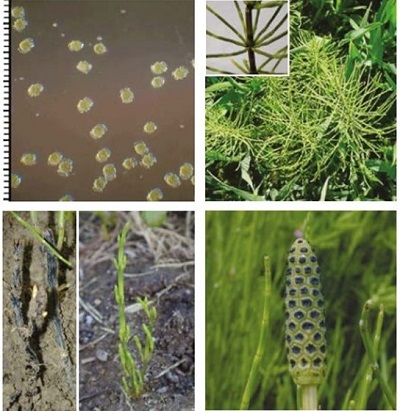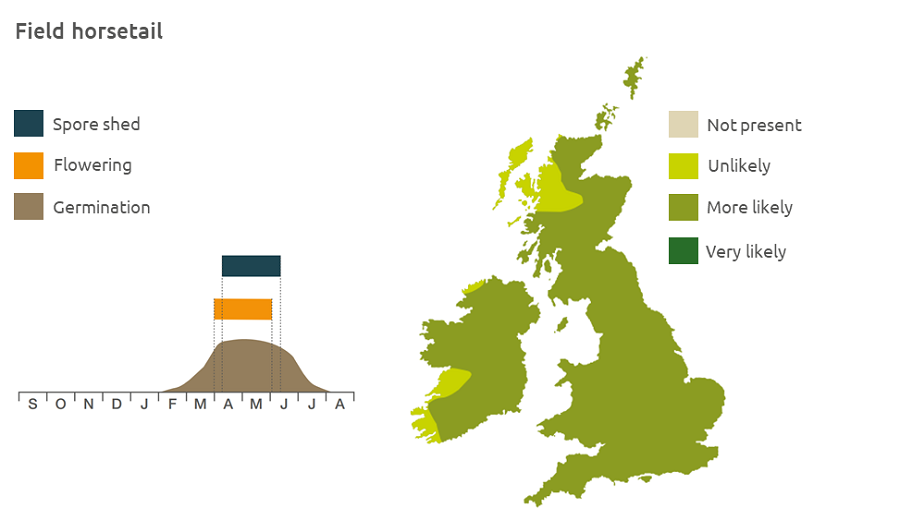- Home
- Knowledge library
- Distribution and biology of horsetail in the UK
Distribution and biology of horsetail in the UK
Horsetails belong to an ancient family and can be a problem weed in perennial crops. Find out how to identify and control it.
Overview
Horsetail (Equisetum arvense) can be a problem in perennial crops, where it is not readily controlled. The wiry stems interfere with harvesting arable crops. It reproduces mainly from rhizome fragments and also from the short-lived spores. Plants overwinter as rhizomes, producing fertile shoots in April and sterile shoots later.
Description
Horsetails belong to an ancient family of their own and have no closely related existing relatives. The leaves have reduced to scales and the stem is the main photosynthetic organ. Stems contain a large amount of silica. A coarse-looking perennial, it tends to occur in patches. It grows up to 80 cm tall and stems are wiry with whorls of needle-like branches. The fertile stem ends in an organ that produces spores (sporangium).
Key features
Plant: The plants have wiry stems which feel gritty when rubbed due to the high silica content. Leaves are like bristles. The rhizomes are black.

Location and life cycle

Geographic distribution
Field horsetail is widespread around Britain in many habitats including roadsides, paths, gardens and waste ground up to an altitude of 1,000 m.
Soil type
It can tolerate a wide range of soil moisture and types.
Seed statistics
Seed information is not relevant to the field horsetail, which reproduces via spores.
Management
It is difficult to control with herbicides, but does not readily persist with routine cultivation.
For advice on herbicides, please speak with your agronomist or adviser.
When was this information last updated?
This page is based on content from the encyclopaedia of arable weeds publication. Since it was first released in 2008, the publication has been redesigned several times but not revised. However, it remains a good foundation for general information on the distribution and biology of weeds.

